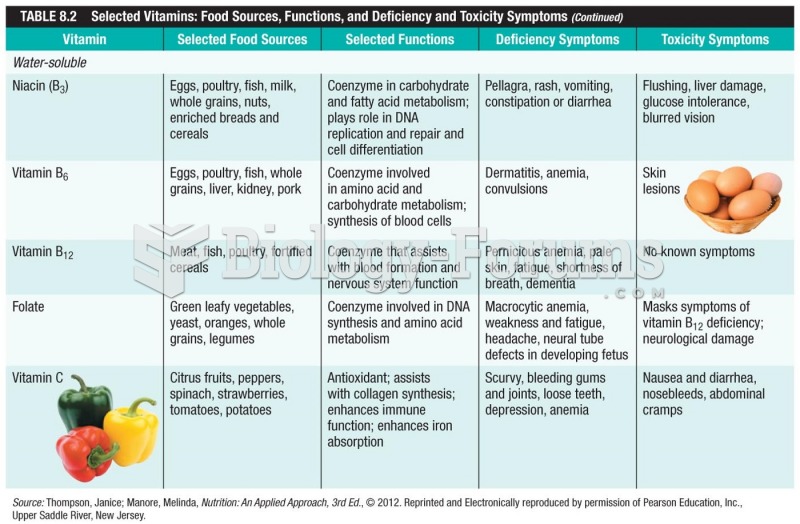|
|
|
An identified risk factor for osteoporosis is the intake of excessive amounts of vitamin A. Dietary intake of approximately double the recommended daily amount of vitamin A, by women, has been shown to reduce bone mineral density and increase the chances for hip fractures compared with women who consumed the recommended daily amount (or less) of vitamin A.
Earwax has antimicrobial properties that reduce the viability of bacteria and fungus in the human ear.
In the United States, there is a birth every 8 seconds, according to the U.S. Census Bureau's Population Clock.
The heart is located in the center of the chest, with part of it tipped slightly so that it taps against the left side of the chest.
About one in five American adults and teenagers have had a genital herpes infection—and most of them don't know it. People with genital herpes have at least twice the risk of becoming infected with HIV if exposed to it than those people who do not have genital herpes.







